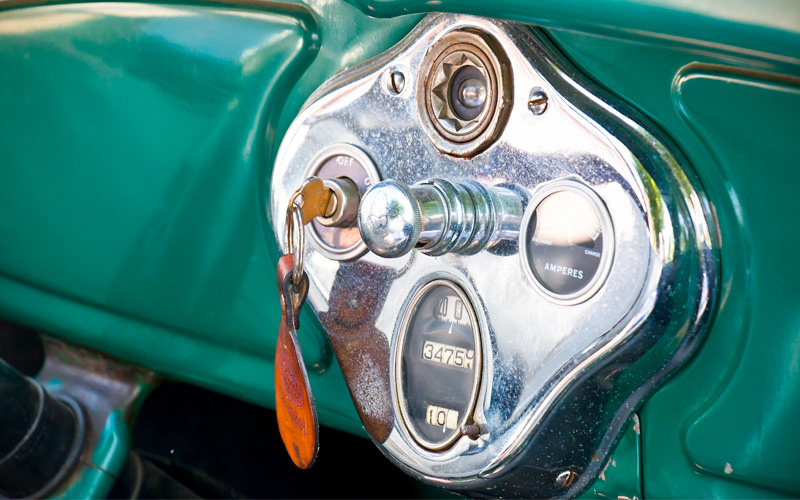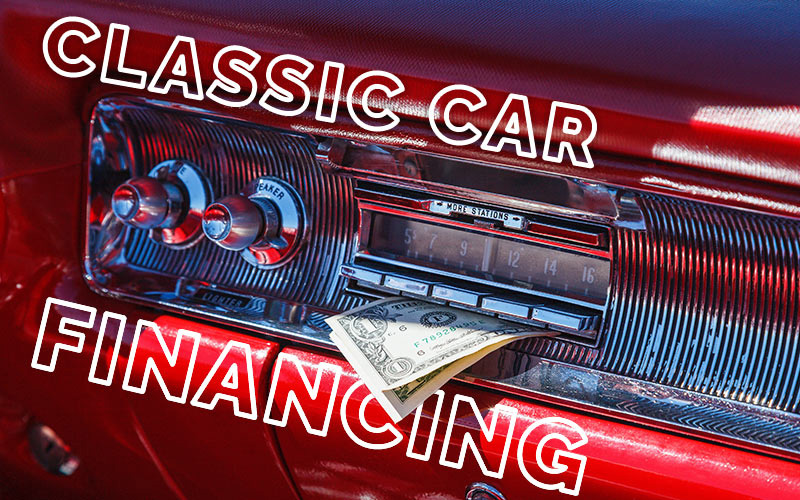Classic Car Financing: How to Secure a Loan to Finance a Classic Car
Good news: in many cases you no longer have to save for years just so you can pay cash for the classic or collector car of your dreams. A new generation of automotive lenders understands the durable value proposition of classic cars and is willing to lend over very favorable rates and terms – but you won’t be surprised to hear that there are a few conditions you’ll encounter along the way. We spoke to our partners at JJ Best Banc & Co., a leading provider of classic car financing, as well to a couple of other industry veterans, to get all of the best advice. Here’s how to finance the classic car of your dreams, in just four easy steps.
Step 1: Information Gathering and Pre-qualification
For a long time, most banks treated classic car financing as personal, uncollateralized, loans. That meant terms that rarely went beyond 36 months, and interest rates that looked suspiciously similar to what you get on a mainstream credit card. Today’s lenders, by contrast, write classic car loans that can go way beyond those terms – out to 96 months in some cases, with competitive interest rates. But one thing hasn’t changed: you’ll still need to have a solid and well-established credit records. “You don’t need to be a millionaire… We do see buyers who earn $50k a year taking out long-term $20k loans on classic cars,” a rep from JJ Best told us, “but obviously those buyers need to be exceptionally creditworthy.”
Is there such a thing as classic car financing for bad credit? It’s rare, but with the right situation, such as a secured amount in escrow or with collateral of exceptional value, some lenders will make an exception. Beware of dealers who claim they can “get you financed” in troubled situations; often that will leave you with no answers and a credit rating that is further damaged in the process.
There’s a better way. JJ Best, like its competitors, offers a pre-qualification service where you can sit down with a rep to find out what you’d be approved for in terms of total amount, term, and interest. Expect to put ten percent down at a minimum; unlike new-car loans, very few classic car loans happen with “zero down”. At the end of the process, you’ll be well-armed with the pre-approval you need to go car shopping in earnest. Want to get a sense of what you’ll pay? All of the major lenders offer a classic car financing calculator on their websites.

Step 2: Find the Right Car
For many of us, this is the hardest part of the process. If you’re taking out a loan on your next classic car, however, you will need to be diligent. JJ Best, for example, limits its classic car loan program to street legal cars with title documentation that matches the serial number on the vehicle. So you’ll want to verify that your desired car meets those requirements. (Want a race car, or a project with a lot of stories under its belt? You might be back at the “personal loan” stage of things.)
You’ll also want to make sure that the condition of the car matches what your lender is expecting; this is a conversation that is easy to have with your representative as you consider individual vehicles. Check out our classic car pre-purchase inspection checklist. Obviously, those expectations vary widely with the desired loan amount, category of vehicle, and age of the car in question.
You don’t need to source your next classic car from a dealer, by the way: JJ Best tells us that about forty percent of their loan customers are purchasing their classic cars from private owners. In that situation, however, all the responsibility for documentation is going to fall squarely on your shoulders. Take the necessary time to ensure that you can get the paperwork you need, and that it precisely matches the car in question. If you are planning on making your classic car purchase at an auction, discuss that with your loan representative ahead of time – and, as with a private purchase, you’ll need to be extra attentive before you raise your paddle on the car of your choice. Don’t get stuck as the winning bidder for a car that doesn’t meet your lender’s standards.

Step 3: “Trust, But Verify”
What’s the number one step classic car buyers can take to make their experience better? JJ Best had a surprising answer: “Go see the car! Get a plane ticket or hire someone that you can trust to act in your best interests. Classic cars aren’t like new cars in a showroom. You will never regret looking at the car in person.” A significant percentage of unsatisfactory transactions happen over the phone, via the internet, or with the help of a third party whose loyalties are unclear. It never hurts to “go to the location and see the real thing” – a principle that is a central part of the famed Toyota Production System, where it translates as “Genchi Genbutsu.”
This is a good time to make sure that the vehicle is in the condition that you expect, and that all the serialized parts match. This is a critical part of classic car financing, but it’s also just a good idea in general. Unless you’re expecting a car with a serial number disagreement – Shelby GT350H that lost its original engine to an enterprising weekend racer, maybe? – it never hurts to take the extra time to verify that the car matches its paperwork.
Naturally, if your seller appears unusually nervous about documentation issues, or if there is some reason the car isn’t available to be verified, that should figure heavily into your purchase decision. A lot of buyers make expensive mistakes simply because they don’t want to be offensive or unpleasant during the process – but a legitimate seller welcomes any reasonable question, so evaluate yours accordingly.
Once you know that you have found the right car, that it’s within your approval range, and that it will meet your lender’s standards for documentation, it’s time for the fun part!

Step 4: Arrange the Transaction and Enjoy Your Car!
If your sole car shopping experiences have been with a new car dealer, the process of buying a classic car with a financing provider will strike you as complex – but it’s for your own good. The simplest transaction will be purchasing a car from a dealer with the assistance of your loan rep; that won’t be all that different from a new car transaction and you may be able to drive the car home the day of your purchase decision.
Slightly more complicated: purchasing a classic car with a clean title in hand. This is where a good loan rep can be very useful; they will work with your seller to determine what makes them most comfortable. In many cases, they can also assist with the transfer of the title. (Some states will require that you initially title the car without a lienholder, then surrender that title to your loan provider for processing.)
Should your classic car of choice have an outstanding loan, there may be a bit of a process involved. The existing loan must be paid off, then the title has to be signed over to you, then the lien has to be added for your loan. Your loan representative may be able to arrange some, or even all, of this for you, but you should go over the order of operations before you agree to purchase the car, just to make sure you understand where the liability lies in each step.
Don’t be frightened by the complexity of a private transaction with an existing lien; it’s nothing that thousands of people don’t successfully accomplish every week. You’ll just want to be extra careful and well-informed.
This is also a good time to call your insurance provider and add the car to your policy; this should be done well in advance of taking delivery. It won’t take long, because you already got your quote from your provider before you agreed to buy the car, right? Of course, you did! Be aware that your lender may have certain minimum requirements for insurance coverage to protect both their interests and yours; your loan representative will be up-front about this.

That’s all, folks!
If you follow the steps above, and if you meet the requirements, you should be in the classic car of your dreams almost as quickly as you could go to a dealership and buy the new car of your choice. It’s never too soon to get exactly what you want – and classic car financing might be the right way to make it happen!



